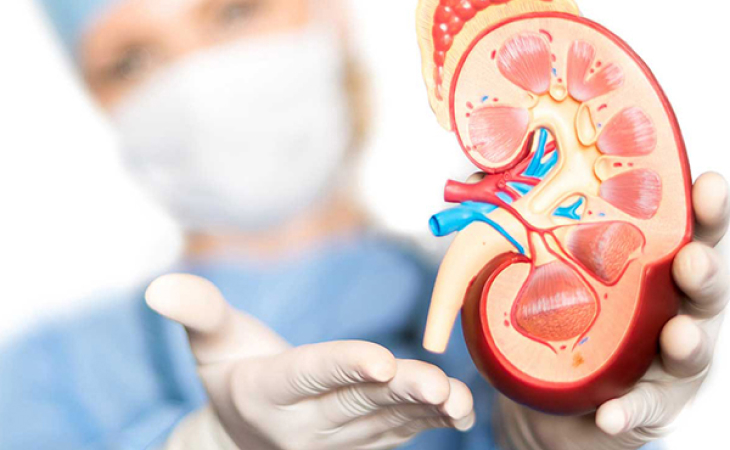Urology, a medical specialty that focuses on the study and treatment of the urinary system, holds a fascination for many. With its intricate network of organs, such as the kidneys, bladder, and urethra, this field not only addresses issues related to urinary health but also encompasses reproductive health in men. From the prevention and management of urinary tract infections to the surgical procedures that aim at restoring normal kidney function, urology plays a vital role in maintaining overall well-being. In this deep dive into bladder health, we embark on a journey to unravel the mysteries of urology and shed light on the importance of maintaining a healthy urinary system. Join us as we explore the complexities, challenges, and advancements in this captivating medical discipline.
Common Bladder Health Issues
Bladder health is a crucial aspect of overall well-being. It is important to understand and address common bladder health issues to maintain a healthy urinary system. Here, we will delve into three prevalent conditions that can affect bladder health:

-
Urinary Tract Infections (UTIs):
UTIs are a common bladder health issue that predominantly affects women. Bacterial infections in the urinary tract can lead to discomfort, frequent urination, and a burning sensation during urination. It is vital to seek medical attention promptly to prevent the infection from spreading to the kidneys. -
Incontinence:
Incontinence refers to the involuntary loss of urine, which can significantly impact a person’s quality of life. Various types of incontinence exist, including stress incontinence (resulting from pressure on the bladder), urge incontinence (characterized by a sudden, intense need to urinate), and overflow incontinence (caused by an inability to fully empty the bladder). -
Bladder Stones:
Bladder stones are hard mineral deposits that can develop in the bladder. They may obstruct the normal flow of urine, leading to discomfort, frequent urinary tract infections, and blood in the urine. Treatment options range from medication to surgical removal of the stones, depending on their size and severity.
By understanding and recognizing these common bladder health issues, individuals can take proactive steps to maintain bladder health and seek appropriate medical intervention when necessary. Remember to consult with a healthcare professional for proper diagnosis and treatment tailored to your specific needs.
Diagnostic Techniques in Urology
-
Imaging and Radiological Tests
Imaging plays a crucial role in diagnosing urological conditions. Techniques such as ultrasound, computed tomography (CT), and magnetic resonance imaging (MRI) provide detailed images of the urinary tract, enabling urologists to identify abnormalities and evaluate the structure and function of organs like the bladder, kidneys, and prostate. Additionally, retrograde pyelography and cystography involve the use of contrast agents to enhance the visibility of the urinary system during X-ray examinations, assisting in the detection of abnormalities and blockages. -
Urine and Blood Tests
When it comes to diagnosing urological disorders, urine and blood tests are valuable tools. Urinalysis can provide information about the presence of bacteria, blood, or other substances that could indicate an infection or kidney problem. The analysis of urine samples can also identify specific markers related to conditions like kidney stones or bladder cancer. Blood tests measure levels of certain substances in the blood, such as PSA (Prostate-Specific Antigen), which can help identify potential prostate issues or prostate cancer. -
Endoscopic Procedures
Endoscopy allows urologists to visually examine the inner lining of the urinary tract using specialized instruments called endoscopes. Cystoscopy, for example, involves inserting a thin tube equipped with a camera into the urethra and bladder to visualize any abnormalities or signs of disease. Additionally, retrograde ureteroscopy enables the urologist to examine the ureters and kidneys using a flexible endoscope passed through the urethra. These procedures provide valuable diagnostic information and often allow for simultaneous treatment of certain urological conditions.
Please note that the aforementioned diagnostic techniques are a general outline and may vary depending on the specific urological condition being evaluated. It is important to consult a urologist for accurate diagnosis and appropriate treatment options.
Promoting Bladder Health: Prevention and Treatment
Bladder health plays a vital role in our overall well-being, and it is crucial to take proactive steps in promoting and maintaining a healthy bladder. Fortunately, there are several preventive measures and treatment options available for individuals seeking to improve their bladder health.
First and foremost, maintaining good hydration is key to bladder health. Drinking an adequate amount of water throughout the day keeps the bladder flushed, reducing the risk of urinary tract infections and promoting overall urinary function. It is recommended to drink at least 8 cups (64 ounces) of water daily to ensure proper hydration.
In addition to hydration, maintaining a healthy diet is essential for a healthy bladder. Foods rich in fiber such as fruits, vegetables, and whole grains can help prevent constipation, which can contribute to bladder problems. Additionally, limiting or avoiding bladder irritants such as caffeine, alcohol, and spicy foods can reduce the likelihood of bladder discomfort or urgency.
When it comes to treatment options for bladder-related issues, several approaches are available. For individuals experiencing urinary incontinence, pelvic floor exercises, also known as Kegel exercises, can strengthen the muscles that control bladder function. These exercises involve contracting and relaxing the pelvic floor muscles, which can improve urinary control and reduce the frequency of incontinence episodes.
For those suffering from bladder infections or other urinary tract conditions, antibiotics are commonly prescribed to clear the infection and alleviate symptoms. It is important to consult a healthcare professional for a proper diagnosis and treatment plan if you suspect a bladder infection or any other urinary issue.
In summary, promoting bladder health involves maintaining proper hydration, following a healthy diet, and seeking appropriate treatment when necessary. By taking proactive steps to care for our bladder, we can prevent discomfort and improve our overall well-being. Remember, a healthy bladder is a happy bladder!